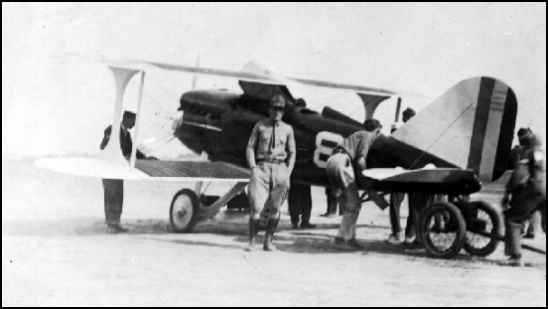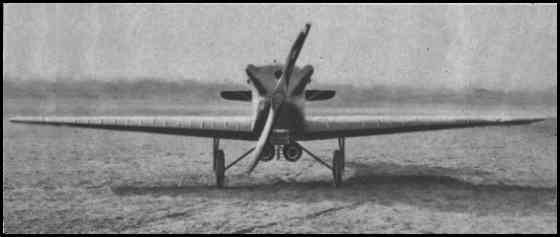
1895-1979 |
 |
|
United States Marine Corps Lieutenant |
|
via email from Larry Lassise, 6-18-06 Nice pic on Sandy Sanderson. I see you are in need of a little bio info on Sandy. Sandy was born on July 22, 1895 in Shelton, WA. He attended the University of Montana graduating in 1917. He was the first squadron commander to lead VF-9M (the first organized Marine Fighter squadron which later became VMF-1) in 1925. In 1966 Shelton Airport was officially named Lawson Field in his honor. He passed away on June 11, 1979 in San Diego, CA Hope this helps. Regards, Larry Lassise |
|
ST. LOUIS MO, 1923 Wednesday |
|
9 a. m..---Gates open 9:30 a. m.---Demonstration of the Farman plane, same as Monday and Tuesday. 11 a. m.---Event No. 7, Detroit News air mail trophy race for air mail planes and pilots. Distance: 186 miles, six times around the course. Prizes, $800, $500 and $200. Entrants: Ernest M. Allison, L. H. Garrison, William C. Hopson, James H. Knight, Harold T. Lewis, James F. Moore, Dean C. Smith, Frank R. Yager, Randolph G. Page, E. F. White, B. H. Winslow, W. F. Blanchfield, R. H. Ellis, W. D. Williams, R. F. Collins and W. L. Smith. Plane numbers not yet assigned. 2 p. m.---Event No. 8, Pulitzer trophy race, the air classic of America, for civilians and military. Distance: 124 miles, four times around the course. Prizes: $2000, $1500 and $500. Entrants: Lieut. S. W. Callaway, U. S. N., 7, Wright fighter; Lieut. L. H. Sanderson, U. S. M. C.,Wright fighter; Ensign A. J. Williams, 9, R-2-C-1; Lieut. Harold J. Brow, U. S. N., 10, R-2-C-1; Lieut. Alexander Pearson, U. S. A., 48, Verville-Sperry racer; Lieut. W. Miller, U. S. A., 49, Curtiss racer; Lieut. J. D. Corkille, 50, Curtiss racer. 4 p. m.---Demonstration of the Barling bomber, largest airplane in the world. 5 p. m.---Formation flying. 7 p. m.---Night flying demonstration, same as Monday and Tuesday nights. |
 |
||
|
VERVILLE-SPERRY RACER The Verville-Sperry racer, trimmest of all aircraft, will be one of the competitors in the race for the Pulitzer trophy. The landing wheels fold up when it is in flight. from Collection of Walter E. Lees |
|
|
|
If time permits, I heartily recommend that you visit Roy's basic site, Aeroplanes, either by clicking on the link at the bottom of the 1923 Saint Louis International Air Meet page, or on the link below. |
|
|
|
"n September 2nd, Japan surrendered in Tokyo Bay, and on September 7th, 1945, Wake was formally surrendered to the U.S.A. to Brig.Gen.Lawson Sanderson (USMC). The atoll is disarmed, all mobile weapons collected, land mines removed and ammunition caches destroyed." If time permits, I recommend that you visit the archive itself so as to appreciate the wealth of material which is available. |
|
"Dive-bombing- more accurately, what we would today describe as glide bombing- had earlier been employed in Haiti. During the intervention there in 1919, Lt Lawson Sanderson of the 4th Squadron realized that the usual practice of horizontal release of bombs by the rear observer was inaccurate, to say the least. By trial and error, Lieutenant Sanderson settled upon the technique of dropping the nose of his aircraft in what was then considered a steep dive of 45 degrees. Flying directly at the target, Sanderson then released the bomb himself at an altitude of roughly 250 feet. The tactic proved considerably more accurate than horizontal bombing, and the other pilots in the squadron soon abandoned the old method in favor of the new one. Such accuracy would prove its worth to the Marine Corps in Nicaragua." You can access the page by clicking on the title above. You may want to use the "FIND" function on Sanderson to find his place on the page. |
|
via email from Larry Lassise, 6-18-06 |
|
If you have any more information on this pioneer aviator please contact me. E-mail to Ralph Cooper Back 

|